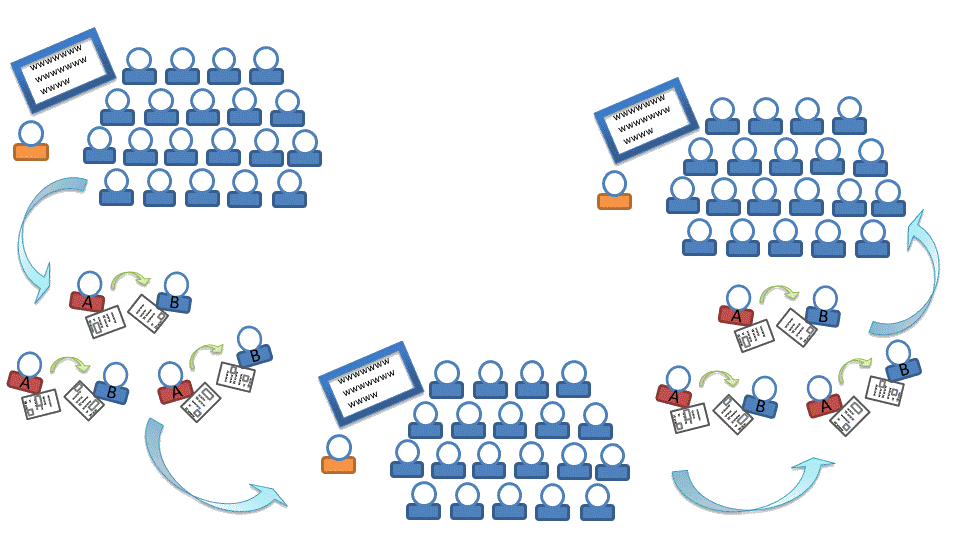Note-taking
On this page
Advance Organizers
Instructors provide a template for taking lecture/reading notes to help them organize their notes and help them focus on big ideas and connections between them.
Promotes: active listening, understanding
Teaching Technique 29: Advance Organizers video © The K. Patricia Cross Academy.
Guided Notes
Instructors provide a set of partially-completed notes that students complete while listening to help them focus on the key concepts presented in the lecture.
Promotes: Active listening, Understanding
Teaching Technique 16: Guided Notes video © The K. Patricia Cross Academy.
Online Technique Adaptation: Guided Notes video © The K. Patricia Cross Academy.
Note-Taking Pairs
Students take turns sharing notes with a partner at intervals in a lecture.
Promotes: understanding, writing, organization skills
Teaching Technique 42: Note-Take Pairs video © The K. Patricia Cross Academy.
Note-taking pairs allows students to take turns sharing notes after mini-lectures of approximately 10 to 15 minutes. It works like this:
- Students listen to the first portion of a lecture around one major concept (approximately 20 minutes) while taking notes.
- Student A shares their notes with Student B, and they work together to fill in any gaps (approximately 5 minutes).
- The lesson returns to a lecture format, and students continue taking notes around a new concept.
- Next, the role between students is reversed. Student B is asked to present their notes from the most recent segment of lecturing to Student A.
- Keep repeating this cycle until the end of the lecture.
In this manner, students become the pedagogues teaching each other and reviewing the content at the same time. Cycling through a process like this that combines lecturing, as the passive delivery mode of information, with collaboration and practice, through summarization and explanation of notes, effectively combines the transmission of information with more engaging peer-to-peer interactions.
This technique is especially good for large, first-year survey courses and is ideally suited to help students practice note-taking strategies. And, it does not require any advanced preparation and can be applied in nearly all disciplines.
-

Diagram of note-taking pairs active learning technique.

